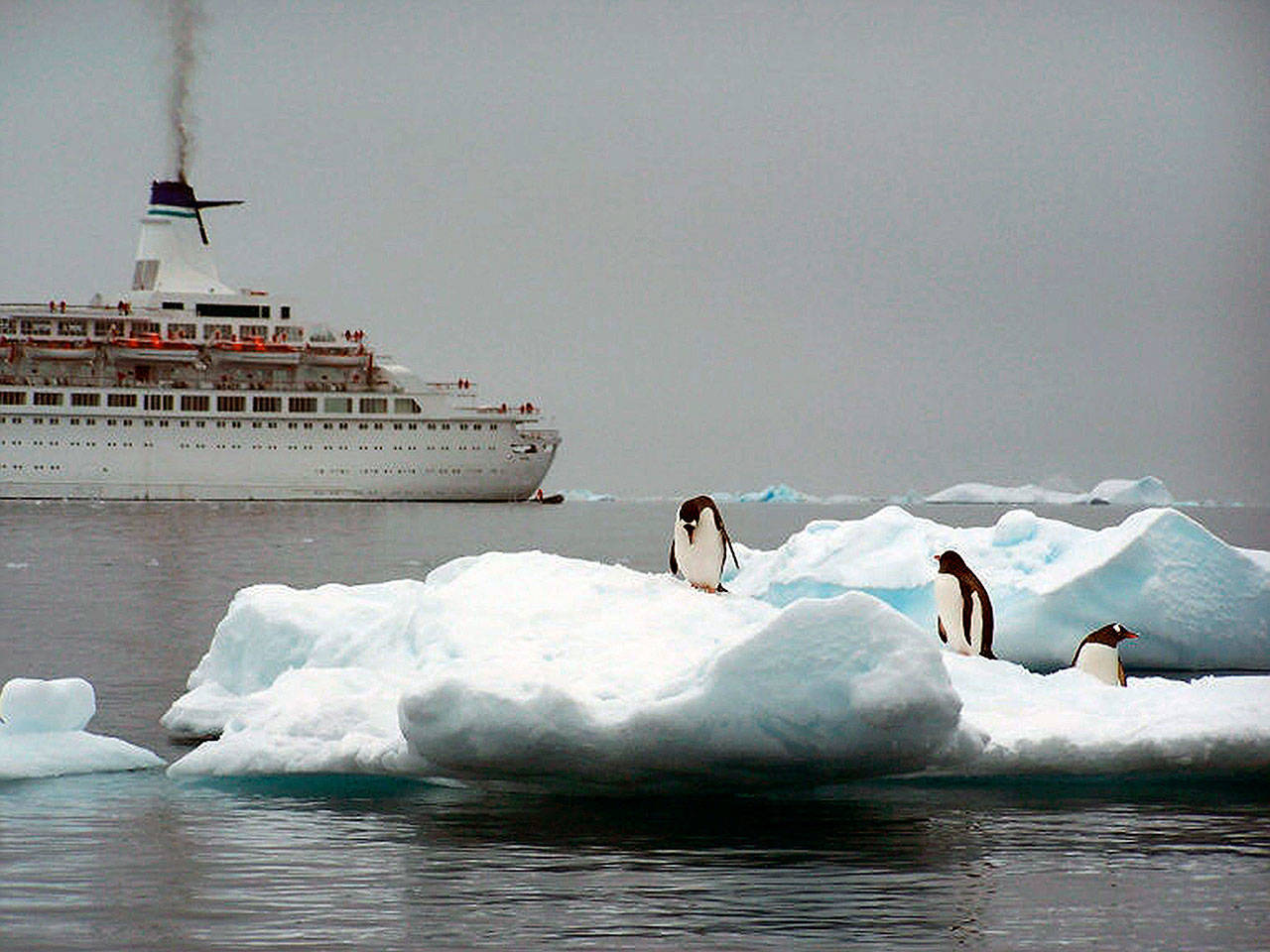By By Amina Khan
Los Angeles Times
The Antarctic ice sheet lost nearly 3 trillion metric tons of ice from 1992 to 2017 and tripled its rate of loss over that time for West Antarctica, according to an international collaboration involving some 80 scientists.
The finding published in Nature reveals that Antarctica’s ice is shrinking at an unprecedented rate and would mean an even higher sea level rise by 2100 — with serious implications for the environment and for people living in coastal regions around the world.
“People should be concerned that Antarctica is clearly feeling the effects of climate change and it’s responding to changes in ocean temperature,” said lead author Andrew Shepherd, a glaciologist at the University of Leeds in England.
According to the overwhelming scientific consensus, the planet is warming at a rate accelerated by the greenhouse gases from human activity. Researchers have linked this rise in temperature to a host of consequences, including rising sea levels and shrinking polar ice reserves.
The ice sheets of Antarctica hold the vast majority of the planet’s fresh water. Theoretically, if they melted entirely, sea level worldwide would rise by 58 meters (190 feet), posing an existential threat to small island nations and coastal communities.
There are three different categories of ice: the ice sheet (enormous layers of ice that sit on land, whether that land is above or below sea level); the ice shelf (parts of the ice sheet that flow from the land into the ocean and begin to calve, or shed chunks of ice) and sea ice (floating chunks of ice that grow and shrink with the seasons).
Each of these plays an important environmental role: the ice sheet holds enormous freshwater reserves, the ice shelves feed freshwater into the ocean, and the sea ice is more reflective of sunlight than the water it floats in, which reduces the amount of heat the planet absorbs.
Many studies have documented ice loss for Antarctica and Greenland, said Shepherd, who led two studies in a suite of papers on Antarctica released by Nature on Wednesday. But there are so many different papers that it’s difficult to know which number to use, he said.
“There are about 150 different estimates of ice loss from Antarctica and Greenland and they use different methods, they cover different proportions of the ice sheets and they cover different time periods,” Shepherd said. “You can always get a seemingly different number if you do it that way.”
That’s why the Ice Sheet Mass Balance Inter-Comparison Exercise, abbreviated IMBIE, was established in 2011, drawing on satellite data and from scientists around the world to arrive at a single, well-documented estimate of ice loss since 1992. For this paper, the collaboration did so again, updating the results to include the years up to 2017.
The scientists used satellite data that relied on three different methods, measuring its volume, its flow over the landscape and its gravitational attraction.
The scientists found that from 1992 to 2017, the ice sheet lost around 2.7 trillion metric tons of ice, corresponding to an average sea level rise of 7.6 millimeters, or about 0.3 inches. Over that period, West Antarctica’s ice loss rate has risen from 53 billion metric tons per year to 159 metric tons annually. On the Antarctic Peninsula, ice loss has shot up from around 7 billion metric tons per year to 33 billion metric tons annually. The numbers are less certain for East Antarctica, which seems to have gained, not lost, ice over that period, though at a meager rate of 5 billion metric tons per year.
The findings could have serious implications for sea level rise over the coming century, the scientist said.
“In the past we’ve been persuaded of a narrative that sea level rise affects people in low-lying countries in the Pacific Ocean, and while that’s devastating for them, it might not be a problem for a majority of the world’s population,” Shepherd said. “Well, in fact that’s not the case; we know now that coastal cities flood when high-tide situations coincide with storms on top of the mean sea level.”
The next step, he added, will be to perform the same analysis for Greenland, to see where these northern ice reserves now stand.


